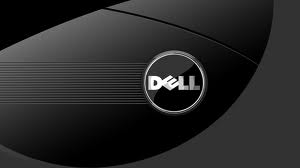Dell is a diversified information technology provider and partners directly with customers covering a wide range of global products and services. Dell in “Fortune” magazine “America the most appreciated companies” rankings, and ranked No. 1 in “Global most appreciated companies” rankings, ranked third. Dell’s commitment to provide our customer’s design, build and deliver innovative customized based systems in order to provide customers with outstanding value.
Spanning over 20 years, the company has always been associated with designing, manufacturing, and customizing products and services to satisfy a diversified range of customers including individual customers to corporate and retailing businesses. The company’s philosophy to deal with customers one-on-one has become a management model for other companies. Having gained the market leadership position in computer products and services, Dell’s team has always been careful in sustaining its marketing strategy of providing standard-based computing solutions.
Marketing Environment
Dell’s strategy is global. It realizes that being closer to the customers is essential in carrying out its marketing strategies as well as in enabling it to build the customer base. First by establishing the Internet infrastructure for booking/orders related activities it has been able to increase its customer base from existing markets. Using the same infrastructure it has been able to carry out its marketing strategies in new offices as well. However, Dell differentiates in its marketing tactics in that it believes in establishing a brick-and-mortar market presence. This is why the company has established sales offices and manufacturing outlets across North America, Europe, Asia, and South America. This way it has been able to gauge the local customers’ needs as well as services desired.
Apart from the above customer-level niche marketing, Dell also believes in reducing competition through collaboration.
Unlike other leaders in the industry such as HP and Compaq, Dell does not believe in taking over existing competitors to eliminate competition. Instead, the company has always prided itself in using partnerships and associations for integrated marketing. For example, Xerox’s addition to the company as a partner for providing printing products and services has served the purpose of integrating one more technology to its list of comprehensive business services. As James Vanderslice, Vice Chairman of Dell says: “By adding Xerox to our roster of preferred printing partners, we are even better equipped to serve our customers with a full range of office printing technologies that provide end-to-end solutions. The Xerox brand is synonymous with quality, technology leadership, and world-class services. We share these core values.” (“Dell and Xerox Forge Strategic Marketing Tie”).
Not only does Dell believe in industry-wide collaboration but also in global collaboration. It has based offices in different countries of the world as a strategic plan due to the fact that it would be able to reach the niche market effectively. By breaking the dominance or monopoly of other computer companies, Dell would be able to capture the market by providing products and services at competitive pricing strategies.
SWOT Analysis
Strengths: Dell’s dynamic organizational structure allows it to achieve diversified targets. By allowing the components to directly become integrated into the manufacturing process of Dell, it has been able to reduce middle channel costs. These components, such as OEMs, CMs, logistics, system integrators, repair, and support companies, component suppliers, third-party HW, and SW suppliers and distributors have become each of the company’s manufacturing processes so that ease of provision to the customers as possible. This reverse organizational process structure differs from other industry leaders. Weaknesses: Within the strengths lie Dell’s weaknesses. Much of its strategies have to rely on the capacity and capability of these manufacturing components. Continuous updates and process improvement is required so that they can keep up with Dell’s pace of development.
Opportunities: Having established an integrative and virtual network, Dell has been able to achieve a high level of corporate outcome that challenged most of the industry leaders. The established value web corporate model has also allowed Dell to have global wide access to customers and the market. Reaching any niche market in any content is therefore not a problem for Dell’s marketers. Threats: However, due to the integration of components in Dell’s organizational structure, Dell competes not only compete at the final product level but also at the suppliers level. Third-party software, for example, has a great competition for price and product categorization which could eventually affect Dell’s position in the market.
Marketing Strategy
Product: Dell’s unique approach to manufacturing separates the different processes so that Dell is not reliant on singular production or supplier’s chain for equipment production. Though there is no segregation of the different products and services nevertheless in separating the components enabled it to target the customers based on the regions in which the products are manufactured. Assigning each regionalized production center a particular component for production not only has diversified the risk of concentration of labor and production costs but also depends on a particular infrastructure.
Price: Dell’s product pricing reflects the affordability of local consumers. For example, basing plants in Xiamen, China Dell has been able to provide products and services at local prices without incurring additional costs to the price. Price reasonability and the availability of support, after-sales services, and parts have alleviated Dell’s position from others.
Place: Dell has been able to affect the location strategy aspect of its marketing campaign. As Dell’s products are always available at the nearest dealers customers develop trust for the “local Dell” thereby achieving the objective of gaining their trust in Dell products and services and forming a large and diversified consumer base.
Promotion: Dell in the past has not concentrated on extensive marketing campaigns but this revolutionized in 1999 when Dell changed its tactics by engaging in
extensive marketing campaigns. The “Be Direct” attitude has changed the way consumers view Dell as the local producer.
Sales promotion
1. Broken down market
Dell computer companies will be in accordance with the product range of its products, respectively, in different areas of application or market classification, a different strategy.
2. Pricing strategy
Through direct sales, Dell like the other major manufacturers of low-cost 100 to 200 U.S. dollars, use a low-cost marketing strategy.
3. Advertising strategy
Advertising on the Dell website, but no. Dell’s website contains a wide range of multimedia pictures and many more performance charts and even made some advertising in the form of slides. These customers can purchase fully stimulate desires.
Distribution channels
Direct modes in compressed product production lines, supplemented by online purchase at the great development of its direct sales model.
Customer Service
1. Online orders, and by a single production
Dell companies enable customers to purchase computers Dell.com and PremierDell.com for enterprise customers, the company has provided more than 60,000 customized web site to allow customers to track orders for purchase and implementation. Valuechain.dell.com orders through the direct transmission to the supplier of raw materials Dell companies, such suppliers will be able to receive real-time information on raw materials, thus contributing to Dell company’s control inventory.
2. Video distribution and delivery guarantee
Dell is particularly unique in that the company provided a special specialized service: network users can choose in accordance with their own preferences and needs of the computer, and the company provides distribution of the final outcome of the
hardware, and system performance forecasts. As a result, the network of shops is in the best possible selection and Dell sites are at the forefront of computer networks. Dell customers are at the center of the customer requirements for different customers different custom, personalized products. For all customers’ choices, the website also provides the corresponding price, payment method, delivery address, and identification and door-to-door in two days.
3. Online technical services and technical support
Dell companies provide online services and technical support is very broad, users answer questions, the escalation on Windows, software upgrades informed, and so on. A wide range of services not only increases the intrinsic value of their products, but can also be user satisfaction, and enhance the competitiveness of our products.
4. Online forums, help, and Search services
Not only large customers, small enterprises, and a large number of persons have also attracted home offices in Dell brands around. In the autumn of 1998, Dell established the executives and customers online forum “had breakfast with Dell” extended to small business users, the topic of this live chat server market trend not only includes such large topics but also for general users the opportunity to make a wide variety of issues, then adopted Dell online knowledge base in artificial intelligence software to help automatically answered.
Dell also provides comprehensive search services. A user-friendly search service can find their desired product and technical support. The scope is a very wide search, the search is on the hardware, but also software for the search; Both assembled whole sets of search; There are various parts of the search, and so on.
5. Orders inquiry and Purchase logistics and delivery logistics
Customers only in the number of Internet customers of six figures or purchase orders numbers, a few minutes, will receive a detailed report on the progress of orders. Delivery logistics, the same achieved its online electronic payment, “customers trolleys” and transport management, etc. functions. Purchase of logistics enterprise-enterprise e-business, not reflected in the website, presumably in the company’s internal network will be involved.
















